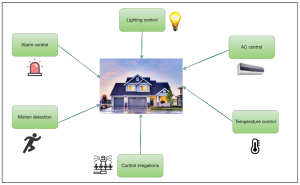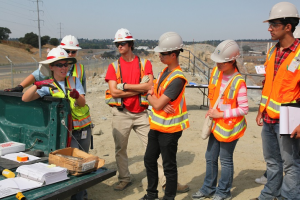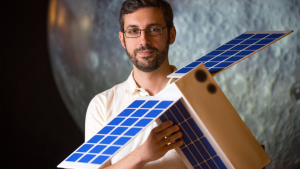Engineering kits for teens offer a captivating gateway into the exciting world of technology, innovation, and problem-solving.
These kits are carefully designed to engage young minds, encouraging them to explore the principles of science, technology, engineering, and mathematics (STEM) in a hands-on and enjoyable way.
With a wide range of options available, from robotics to electronics and coding, these kits empower teenagers to tinker, build, and experiment, fostering creativity and critical thinking while sparking a lifelong passion for engineering.
We will delve into some of the best engineering kits tailored for teens, each designed to inspire and educate the engineers and inventors of tomorrow.
Robotics Challenge:

Introduce teens to the fascinating world of robotics with an engineering kit that allows them to build their own robots. These kits typically come with all the necessary components and instructions to assemble and program a functional robot. Once the robot is constructed, encourage teens to experiment with different sensors, motors, and coding techniques to complete fun challenges. For instance, they can design a robot that navigates a maze, detects obstacles, or even performs specific tasks like drawing or picking up objects. Robotics kits not only teach mechanical engineering but also enhance coding skills and problem-solving abilities, making them an excellent choice for aspiring engineers.
Electronic Circuit Projects:

Another engaging activity idea is to provide teens with electronic circuit kits that enable them to explore the world of electricity and electronics. These kits come with various components like resistors, capacitors, LEDs, and microcontrollers, allowing teens to build a wide range of electronic projects. Teens can start with simple circuits like LED blinkers and gradually progress to more complex projects such as digital thermometers or even small digital games. This hands-on experience helps them understand the fundamental principles of electronics and circuit design, essential skills for future engineers.
3D Printing and Modeling:

With the advent of 3D printing technology, teens can get involved in designing and creating their own 3D-printed objects. Engineering kits that focus on 3D printing and modeling provide the tools and software necessary for teens to unleash their creativity. They can design and print objects ranging from functional prototypes to intricate artistic creations. This activity not only teaches them about additive manufacturing but also nurtures their design thinking and CAD (Computer-Aided Design) skills, which are highly relevant in various engineering disciplines.
Related: 25 Easy Stem Activities for 2nd Graders
Environmental Engineering Projects:

Engage teens in meaningful engineering projects related to environmental sustainability. Kits that focus on environmental engineering allow them to explore topics like renewable energy, water purification, and waste management. They can build small-scale wind turbines, solar-powered devices, or water filtration systems. These projects not only introduce teens to the principles of environmental engineering but also instill a sense of responsibility towards the planet, encouraging them to think about innovative solutions to real-world environmental challenges.
Coding and Game Development:

Foster an interest in software engineering and game development by providing teens with kits that emphasize coding and game creation. These kits often include programming languages like Python or Scratch and resources for building video games or interactive applications. Teens can start by modifying existing games and gradually progress to designing their own. Through this activity, they not only learn coding skills but also gain insight into game design principles and user experience, which are valuable in the field of software engineering and game development.
Aeronautical Engineering Simulations:

Capture the fascination of flight and aeronautical engineering with kits that allow teens to explore the principles of aerodynamics. These kits often include model airplanes or drones that teens can assemble and pilot. Encourage them to experiment with different wing designs, control systems, and flight maneuvers. This hands-on experience not only introduces them to the basics of aeronautics but also nurtures their problem-solving skills as they work to optimize the performance of their aircraft.
Hydraulic and Mechanical Engineering Challenges:

Engage teens in the world of mechanical engineering and fluid dynamics with kits focused on hydraulic systems. These kits typically include components like syringes, tubes, and connectors, enabling teens to build working hydraulic machines. They can construct hydraulic arms, lifts, or even robotic hands. This hands-on exploration helps them understand the principles of force, pressure, and mechanical advantage, essential concepts in mechanical engineering.
Renewable Energy Experiments:

Foster an interest in sustainable energy solutions with engineering kits that focus on renewable energy sources such as solar and wind power. Teens can build their own solar panels or wind turbines and experiment with harnessing energy from these sources. They can learn about energy conversion, storage, and efficiency while exploring the potential for renewable energy in addressing global energy challenges.
Related: 30 Fun Stem Projects for Middle School
Structural Engineering and Architecture Projects:

Encourage teens to think like architects and structural engineers by providing kits that allow them to design and construct buildings and bridges. These kits often include materials like wooden or plastic beams and connectors. Teens can learn about load-bearing structures, architectural design, and the importance of stability in construction as they create their own architectural marvels.
Space Exploration and Rocketry:

Spark an interest in space exploration and aerospace engineering with kits that focus on building and launching model rockets. Teens can assemble and customize rockets, learn about propulsion systems, and even conduct simple experiments such as altitude measurement or payload deployment. This activity introduces them to the basics of rocket science and aerospace engineering while igniting their curiosity about the cosmos.
Bioengineering and Biotechnology Exploration:

Delve into the exciting field of bioengineering and biotechnology with kits that allow teens to conduct experiments in molecular biology, genetics, and biochemistry. These kits often include tools and materials for DNA extraction, gel electrophoresis, and genetic engineering. Teens can explore topics like genetic variation, DNA fingerprinting, or even create genetically modified organisms (GMOs) in a controlled and safe environment. This hands-on experience provides valuable insights into the rapidly advancing field of biotechnology.
Internet of Things (IoT) Prototyping:

Equip teens with IoT engineering kits that enable them to create smart devices and applications. These kits often include microcontrollers, sensors, and communication modules. Teens can design and build devices that interact with the internet, such as home automation systems, weather stations, or wearable technology. This activity not only enhances their programming skills but also introduces them to the concept of connected devices and data analysis, which are at the forefront of modern engineering.
Marine Engineering and Underwater Robotics:

Dive into the world of marine engineering and underwater exploration with kits designed for building remotely operated underwater vehicles (ROVs). Teens can construct ROVs capable of underwater maneuvering, capturing images, and collecting data. This hands-on experience introduces them to marine biology, oceanography, and engineering challenges related to underwater navigation and communication.
Civil Engineering Challenges:

Introduce teens to civil engineering principles by providing kits that focus on structural and civil engineering projects. These kits often include materials for building bridges, towers, or earthquake-resistant structures. Encourage teens to explore topics like load distribution, material strength, and earthquake engineering as they design and construct structures that can withstand various challenges.
Renewable Energy Car Design:

Combine engineering and environmental awareness by tasking teens with designing and building renewable energy-powered model cars. These kits typically include small solar panels, wind turbines, or electric motors. Teens can experiment with different energy sources and design modifications to optimize the performance of their eco-friendly vehicles. This activity highlights the importance of sustainable transportation solutions and renewable energy integration in the automotive industry.
Space Exploration Simulations:

Engage teens in the mysteries of outer space with kits that simulate space exploration missions. These kits often include model rockets, telescopes, or even miniature spacecraft. Teens can embark on a journey to learn about rocketry, astronomy, and space science. They can launch rockets into the sky, study celestial objects, and simulate space missions, fostering their interest in aerospace engineering and astrophysics.
Automotive Engineering Challenges:

Ignite a passion for automotive engineering with kits that allow teens to build and customize model cars. These kits often come with various car components and tools for assembly. Encourage teens to modify their vehicles, experiment with different engines, and optimize performance. This activity provides insight into automotive design and mechanics, emphasizing the importance of efficiency and innovation in the automotive industry.
Environmental Monitoring and Data Analysis:

Combine environmental science with engineering by using kits that enable teens to create monitoring systems for air quality, weather conditions, or soil health. These kits often include sensors, microcontrollers, and data analysis software. Teens can design and deploy their environmental monitoring stations, collect data, and analyze trends. This activity not only educates them about environmental engineering but also emphasizes the role of technology in addressing environmental challenges.
Spacecraft Design and Engineering:

Encourage teens to dream big by exploring spacecraft design and engineering. Kits in this category often provide components for building model spacecraft, complete with deployable instruments and solar panels. Teens can learn about the challenges of space exploration, such as propulsion, communication, and power generation, as they design and assemble their own spacecraft models.
Hybrid Renewable Energy Systems:

Foster an understanding of complex engineering systems by introducing teens to hybrid renewable energy kits. These kits typically combine solar panels, wind turbines, and energy storage components. Teens can design and build systems that combine multiple renewable energy sources to power various devices. This activity helps them grasp the importance of integrating different technologies to create sustainable and efficient energy solutions.
Related: 30 Fun Activities for 9-11 Year Olds

